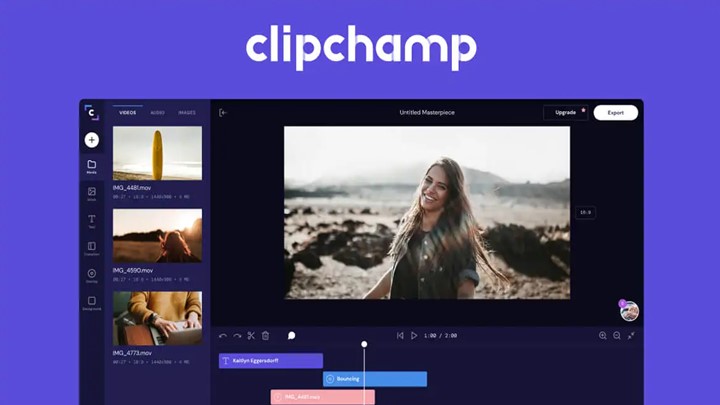Last Updated on February 13, 2025 by Uncle Pat Ugwu
Remote learning has established itself as a permanent transformation of education delivery. It’s a total game-changer. Remote education has transformed the learning experience radically because it serves students from all walks of life, including professionals and curious learners alike.
But what makes it so great?
Why do so many individuals decide to adopt this new approach? Our discussion today looks into the benefits of remote learning. One of the biggest advantages is wearing pajamas throughout the day (LOL) while learning.
To start…
What Exactly Is Remote Learning?
Before we get into the good stuff, let’s break it down. Remote learning is basically education without the traditional classroom. Instead of sitting in a lecture hall, you’re learning through live video sessions, pre-recorded lessons, or interactive online platforms—all from the comfort of wherever you want.
The learning experience reaches students without their need to move physically to a classroom setting. Remote learning enables students to study their way through education from their chosen location including residence and coffee shops and during travel. Remote learning has attracted students together with working professionals and hobbyists as well as lifelong learners who have become its new members.
Remote learning has become a major important aspect for several reasons. Let’s get into it.
The Top Benefits of Remote Learning
Now, let’s get to the good stuff—the benefits of remote learning. From flexibility to cost savings, remote learning offers a host of advantages that are hard to ignore. Here are the top reasons why it’s becoming the go-to choice for learners everywhere:
1. Flexibility to Learn on Your Own Schedule
One of the biggest perks of remote learning is the freedom to learn when and where it works for you. Got a full-time job? No problem. You can take classes in the evening or on weekends. Are you a night owl? Great—you can study at 2 a.m. if that’s when you’re most productive.
This flexibility is a game-changer for people with busy lives. For example, my friend Chikah, a single mom, was able to complete her degree online while juggling work and parenting. She told me, “Remote learning gave me the chance to chase my dreams without sacrificing time with my kids.”
2. Cost-Effective Learning
Let’s be real—education can be expensive. Between tuition, textbooks, and commuting costs, traditional learning can drain your wallet. Remote learning, on the other hand, is often more affordable. Many online courses are cheaper than their in-person counterparts, and you save money on gas, parking, and even lunch.
Plus, there are tons of free or low-cost resources available. Platforms like Coursera, Khan Academy, and YouTube offer high-quality courses for little to no cost. It’s like having a world-class education at your fingertips—without the hefty price tag.
3. Access to Global Experts
With remote learning, geography is no longer a barrier. Want to learn coding from a Silicon Valley expert? Or take a writing class from a bestselling author in London? Remote learning makes it possible.
This access to global expertise is one of the most exciting benefits. For instance, I once took a photography course taught by a National Geographic photographer. It was an incredible experience that I never would’ve had access to in my small town.
4. Improved Tech Skills
Let’s be honest—navigating online platforms, video calls, and digital tools can be intimidating at first. But here’s the silver lining: remote learning forces you to get comfortable with technology. And in today’s digital world, that’s a skill worth having.
Whether you’re mastering Zoom, learning to use project management tools, or troubleshooting tech issues, remote learning equips you with the digital literacy you need to thrive in the modern workforce.
5. Personalized Learning Experience
Remote learning lets you tailor your education to your needs. Struggling with a concept? You can rewatch a lecture or pause to take notes. Want to skip ahead because you’re already familiar with the material? Go for it.
This personalized approach is especially helpful for people who learn at different paces. For example, my cousin Alex, who has ADHD, found that remote learning allowed him to take breaks when he needed them and focus better overall.
Remote Learning vs Online Learning
You might be wondering, “Isn’t remote learning the same as online learning?” Not exactly. While both involve digital platforms, remote learning often includes live interaction with instructors and peers, making it more dynamic and engaging. Online learning, on the other hand, is usually self-paced and pre-recorded.
Think of it this way: remote learning is like a live concert, while online learning is more like listening to a recorded album. Both have their place, but remote learning offers a more interactive and immersive experience. Remote learning and online learning have key differences:
| Feature | Remote Learning | Online Learning |
|---|---|---|
| Structure | Live, scheduled classes | Self-paced, no fixed schedule |
| Interaction | Real-time engagement with instructors | Minimal to no live interaction |
| Best For | Those who need structured learning | Independent learners who prefer flexibility |
While both offer flexibility, remote learning provides a more classroom-like experience, making it a better fit for students who thrive in structured settings.
Remote Learning Advantages and Disadvantages
While the benefits of remote learning are undeniable, it’s important to acknowledge the challenges too. Here’s a quick breakdown:
Advantages
- Flexibility to learn on your own schedule
- Cost savings on tuition, commuting, and materials
- Access to global experts and resources
- Improved tech skills and digital literacy
- Personalized learning experience
Disadvantages
- Requires self-discipline and motivation
- Limited face-to-face interaction
- Potential for tech issues or distractions
- Not ideal for hands-on subjects like lab sciences
Why Remote Learning Is Here to Stay
The pandemic may have accelerated the shift to remote learning, but it’s not going anywhere. According to a 2023 report by ResearchAndMarkets, the global e-learning market is expected to reach $457.8 billion by 2026. That’s a lot of people logging in to learn!
And it’s not just about convenience. Remote learning is democratizing education, making it accessible to people who might not have had the opportunity otherwise. Whether you’re in a rural area, balancing work and family, or simply prefer learning at your own pace, remote learning opens doors that were once closed.
Final Thoughts
So, what’s the verdict? Remote learning offers three main advantages its flexible setup and affordable costs and its capability to provide top educational programs. Remote learning works for many students but it does not fit every educational situation similarly. One needs to show self-motivation combined with adaptability and a willingness to utilize technology.
Remote learning will not appeal to students who need structure or need to interact with people in person. People who desire education management along with flexible learning options should consider it to be a major game-changer. There are also more benefits to collaborative learning.
Remote learning exists beyond current trends because it shows education’s transformation to adapt to today’s interconnected world that moves at speed. So, why not give it a try? Your literal control determines the educational direction that learning will take in the future.







